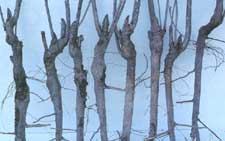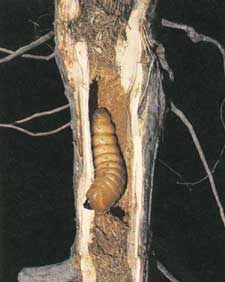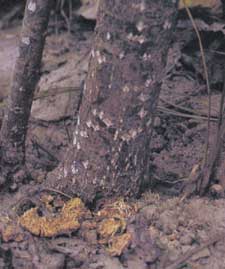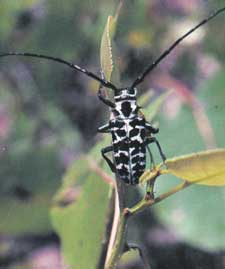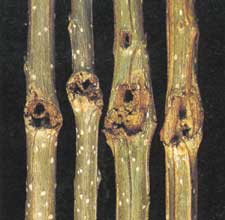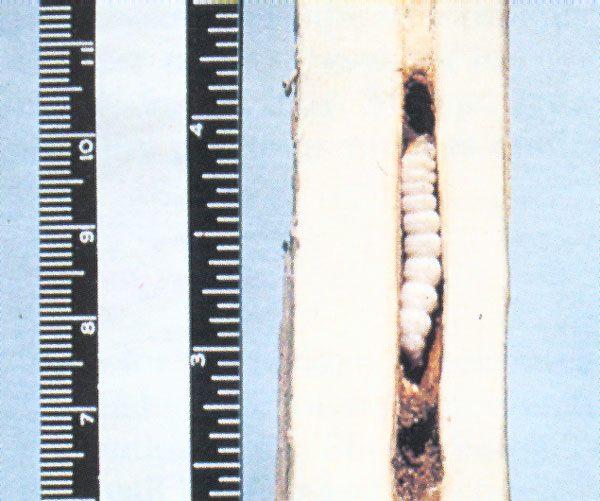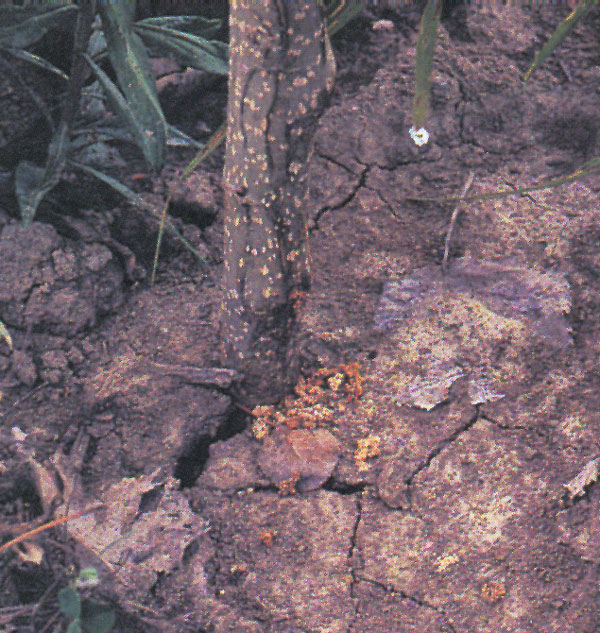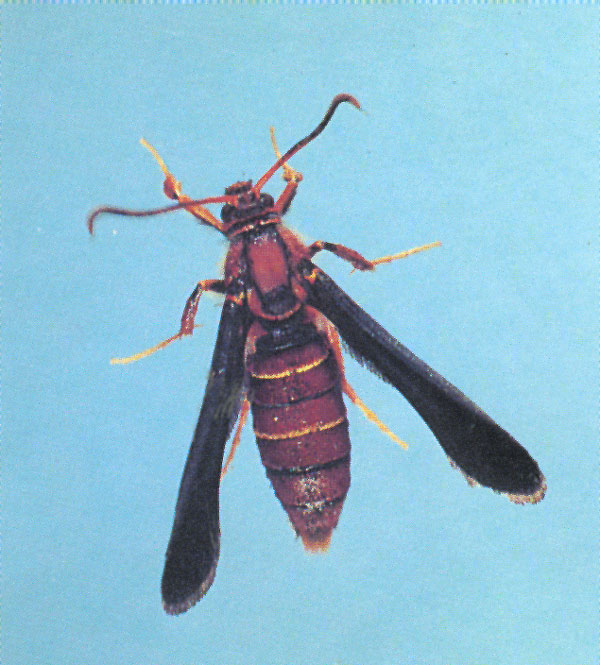Cottonwood BorersJames D. Solomon - Principal Research Entomologist, Southern Forest Experiment Station, USDA Forest Service, Southern Hardwoods Laboratory, Stoneville, MS. Cordell C.E., Anderson R.L., Hoffard W.H., Landis T.D., Smith R.S. Jr., Toko H.V., 1989. Forest Nursery Pests. USDA Forest Service, Agriculture Handbook No. 680, 184 pp. Hosts Eastern cottonwood is the major host of the cottonwood borer (Plectrodera scalator) and the clearwing borer (Paranthrene dollii). Poplars and willows are also affected by these insects. Distribution The distribution corresponds closely with the range of eastern cottonwood in the Eastern United States. The range of both borers extends westward into the Plains States; P. scalator is reported as far west as New Mexico and Montana. The largest populations occur in the Southern and Central States. Damage Larvae of P. scalator hollow, partially sever, or girdle the roots, causing structural weakening, loss of vigor, and mortality. Feeding by adult beetles of P. scalator often causes terminal death, followed by excessive branching, forking, and crooked stems. Stools for vegetative cutting production heavily infested with P. dollii do not produce vigorous shoots for vegetative cuttings. Some breakage occurs at tunneled sites.
They have breaks and openings in the bark, and frass often protrudes from gallery openings. In contrast, uninfested roots are comparatively smooth and uniform in shape. Dissection of infested roots reveals galleries with one or more large, white, legless, longicorn-type larvae (fig. 37-2). Light-brown, fibrous (usually excelsiorlike) frass (fig. 37-3) is occasionally ejected from bark openings at the groundline. From June through August, the large, black and white longhorn beetles (fig. 37-4) can be seen feeding on bark and terminals. Attacks by P. dollii occur on the aboveground stem and are concentrated around the basal portion of the plant. Initial attacks are characterized by sap ooze and frass ejected from entrance holes. Attack sites often appear cankered and have enlarged entrances (fig. 37-5).
Biology Both borer species overwinter as larvae - P. scalator in roots and P. dollii in stools, trunks, and branches. Adults of P. scalator emerge mainly during June and July, cut niches in the bark, and lay eggs singly at or just below the groundline. Young larvae tunnel downward into the roots and produce galleries up to 1 in wide and 8 in long. The life cycle of P. scalator requires 1 to 2 years. Paranthrene dollii has one generation per year. In the South, broods overlap, giving rise to moth emergence from April to November; in the North, moths emerge mostly during May and June. Control Prevention - Locate the nursery site half a mile or more away from naturally occurring or planted poplars or willows to minimize insect invasion. Establish the nursery with uninfested cuttings or seedlings. Cultural - Collect and promptly burn all branch, terminal, and basal trimmings and culled cuttings resulting from vegetative cutting operations to destroy hibernating insects. Infested stools serve as the principal reinfestation reservoir for both P. scalator (in roots) and P. dollii (root collar). Therefore, dig and burn all sprout stools at 3-year intervals and replant with borer-free cuttings. Chemical - Apply three weekly applications of carbaryl, chlorpyrifos, or diazinon to control P. scalator adults. The first application should be made 4 to 6 days after the first adults appear (about June 1 in Mississippi). Although effective in recent experimental tests, these insecticides are not presently registered for controlling these insects in nurseries. Chemical controls for P. dollii have not been adequately tested. Selected References Morris, R.C.; Filer, T.H. Jr.; Solomon, J.D. [and others]. 1975. Insects and diseases of cottonwood. Gen. Tech. Rep. 50-8. New Orleans, LA: U.S. Department of Agriculture, Forest Service, Southern Forest Experiment Station. 37 p. Solomon, J.D. 1980. Cottonwood borer (Plectrodera scalator) - a guide to its biologv, damage, and control. Res. Pap. SO157. New Orleans, LA: U.S. Department of Agriculture. Forest Service, Southern Forest Experiment Station. 10 p. |
Forest Pests: Insects, Diseases & Other Damage Agents |

|
|
